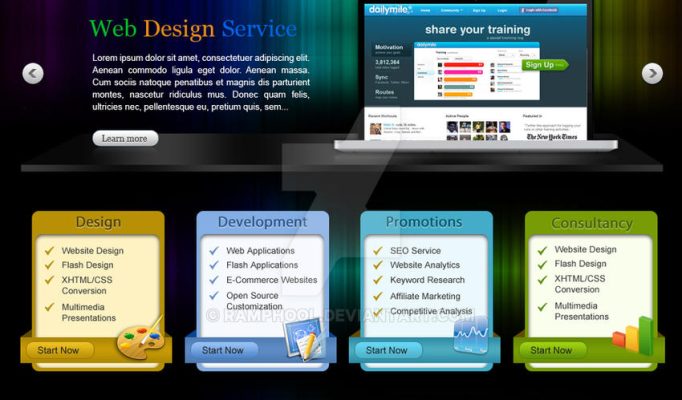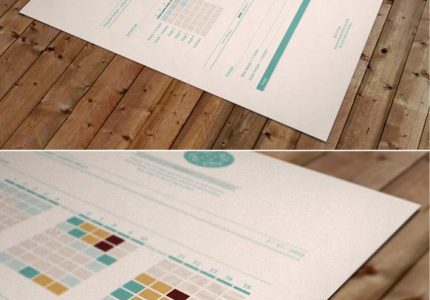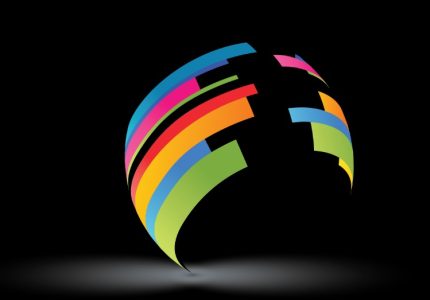Overview of Graphic Design
Graphic design is a creative discipline that combines visual elements to communicate messages effectively and aesthetically. It plays a crucial role in shaping the identity and branding of businesses, products, and services. Alongside web design, which focuses on crafting user-friendly and visually appealing websites, graphic design forms the foundation for conveying ideas and engaging audiences in the digital world. Together, these fields influence how information is presented and perceived in modern communication.
Definition and Purpose
Graphic design is a creative process that combines art, technology, and communication to convey ideas visually. It involves the use of typography, images, colors, and layout techniques to create visually appealing and effective messages. The primary purpose of graphic design is to attract attention, communicate information, and influence perception, making it an essential element in branding, advertising, and digital media.
- Enhances visual communication by making complex ideas more understandable
- Builds brand identity through consistent visual elements
- Supports marketing efforts by creating engaging and persuasive visuals
- Improves user experience on websites through thoughtful design
- Facilitates clear and effective information presentation in both print and digital formats
Key Principles of Graphic Design
Graphic design is a creative process that combines art and technology to communicate ideas visually. It plays a vital role in branding, marketing, and digital media by utilizing elements like typography, imagery, and layout to convey messages effectively. In the context of web design, graphic design ensures that websites are visually appealing, user-friendly, and aligned with brand identity.
The key principles of graphic design include balance, contrast, alignment, hierarchy, repetition, proximity, and simplicity. Balance involves distributing visual weight evenly across a design to create harmony. Contrast emphasizes differences to highlight important elements and improve readability. Alignment ensures that elements are visually connected, leading to a clean and organized look. Hierarchy guides the viewer’s eye to the most important information first, often through size, color, or placement. Repetition reinforces brand identity and creates consistency throughout the design. Proximity groups related items together, helping to organize content logically. Simplicity focuses on clarity by removing unnecessary elements, resulting in a clear, effective design that communicates its message efficiently.
Popular Tools and Software
Graphic design is a creative discipline focused on visual communication through the use of images, typography, and layout to convey messages and ideas effectively. It plays a crucial role in branding, advertising, and digital media, shaping how audiences perceive and interact with visual content. Web design, a subset of graphic design, specializes in creating user-friendly, aesthetically appealing websites that enhance user experience and engagement.
Popular tools and software in graphic design include Adobe Photoshop, Adobe Illustrator, and Adobe InDesign, which are industry standards for image editing, vector graphics, and layout design, respectively. Other widely used programs are CorelDRAW, Canva, and Affinity Designer, offering versatile features for both professional designers and beginners. In web design, tools like Adobe XD, Sketch, and Figma are favored for wireframing, prototyping, and collaborative design, enabling designers to craft responsive, interactive websites efficiently.
Applications of Graphic Design
Graphic design is a creative discipline that focuses on visual communication through the use of typography, images, color, and layout to convey messages effectively. It plays a crucial role in shaping brand identity, marketing materials, and user experiences. In today’s digital age, graphic design is integral to both print and digital mediums, ensuring clarity and aesthetic appeal.
Applications of graphic design span a wide range of fields, including advertising, branding, packaging, web design, and social media. In web design, graphic designers create visually engaging websites that are user-friendly and aligned with brand goals. They utilize their skills to develop logos, banners, icons, and other visual elements that enhance the overall user experience and attract target audiences. The combination of creativity and technical expertise makes graphic design an essential component in effective communication and digital presence.
Overview of Web Design
Web design is a crucial aspect of creating engaging and user-friendly websites, combining aesthetics with functionality. It involves various elements such as layout, color schemes, typography, and interactive features to deliver an effective online experience. While graphic design focuses on visual content and aesthetics, web design integrates these visual principles with technical skills to build accessible and responsive websites that meet user needs.
Definition and Objectives
Web design is the process of creating and arranging content on websites to ensure they are visually appealing, user-friendly, and functional. It combines elements of graphic design and coding to produce an engaging online experience. The primary objectives of web design include enhancing usability, delivering an effective message, and encouraging user interaction. Good web design aims to attract visitors, provide easy navigation, and support the brand’s image, ultimately driving success and growth for online platforms.
Core Components of Web Design
Web design is the process of creating websites that are visually appealing, user-friendly, and functional. It involves various elements that work together to provide a seamless experience for visitors. In the field of graphic design, web design integrates visual aesthetics with usability to communicate effectively through digital platforms.
The core components of web design include layout, color scheme, typography, imagery, and user interface elements. Each component plays a vital role in establishing the website’s overall look and feel, ensuring that content is accessible and engaging for users.
- Layout – The arrangement of elements on the webpage to create a balanced and intuitive structure.
- Color Scheme – The selection of colors that enhance visual appeal and reinforce branding.
- Typography – The choice of fonts and text styles that improve readability and complement the design.
- Imagery – The use of images, icons, and graphics to communicate messages and add visual interest.
- User Interface Elements – Components such as buttons, menus, and forms that facilitate user interaction.
Responsive and Mobile-First Design
Web design is a crucial aspect of graphic and digital communication, focused on creating visually appealing and user-friendly websites. It involves the careful arrangement of elements such as layout, colors, typography, and imagery to enhance user experience and convey messages effectively.
Responsive design is a vital approach in modern web development that ensures websites adapt seamlessly to various screen sizes and devices. By using flexible grids, images, and CSS media queries, responsive design provides consistent functionality and aesthetic across desktops, tablets,, and smartphones.
Mobile-first design prioritizes designing for the smallest screens first, then progressively enhancing the layout for larger devices. This strategy enables designers to focus on essential content and usability, resulting in efficient, lightweight websites that perform well on mobile devices and improve overall accessibility.
Web Design Tools and Technologies
Web design is the process of creating visually appealing and user-friendly websites that effectively communicate a message or serve a specific purpose. It involves planning, designing, and developing websites by combining various elements such as layout, color schemes, typography, and images to enhance user experience and engagement.
Web design tools and technologies provide designers with the resources needed to build functional and attractive websites. These tools range from graphic design software to coding platforms, enabling designers to bring creative ideas to life efficiently.
- Graphic Design Software: Tools like Adobe Photoshop, Illustrator, and Sketch are essential for creating visual elements, mockups, and prototypes.
- Code Editors and IDEs: Applications such as Visual Studio Code, Sublime Text, and Atom facilitate writing and managing HTML, CSS, and JavaScript code.
- Frameworks and Libraries: Technologies like Bootstrap, React, and Angular help streamline development by providing pre-built components and functionalities.
- Content Management Systems: Platforms like WordPress, Joomla, and Drupal allow for easier content management and website updates without extensive coding knowledge.
- Responsive Design Techniques: Using CSS media queries and flexible grids ensures websites look great on all devices, from desktops to smartphones.
Differences Between Graphic and Web Design
Graphic design and web design are two distinct fields within the creative industry, each serving unique purposes and requiring different skill sets. While graphic design focuses on creating visual content for print and digital media, web design revolves around building and designing websites to ensure an engaging and functional online experience. Understanding these differences helps professionals and clients navigate the requirements and expectations of each discipline effectively.
Scope and Focus
Graphic design and web design are two distinct fields within the visual communication industry, each with its own scope and primary focus. While they often overlap, understanding their differences helps in choosing the right skill set for a project.
- Scope: Graphic design primarily focuses on creating visual content for print and digital media, such as logos, posters, branding materials, and advertisements. Web design, on the other hand, centers on designing websites and digital interfaces, ensuring functionality, usability, and user experience.
- Focus: Graphic design emphasizes visual aesthetics, color theory, typography, and imagery to communicate messages effectively. Web design combines visual elements with interactive and technical aspects, including layout, navigation, responsiveness, and accessibility.
- Tools and Skills: Graphic designers often use software like Adobe Photoshop, Illustrator, and InDesign, whereas web designers utilize tools like Adobe XD, Figma, along with knowledge of HTML, CSS, and sometimes JavaScript.
- Output and Applications: The output of graphic design is usually static images or visual assets, suitable for print or digital branding. Web design results in functional websites and apps that are interactive and adaptable to different devices and screen sizes.
Skills and Techniques
Graphic design and web design are two closely related fields that often overlap but serve different purposes and require distinct skills and techniques. Understanding their differences helps in choosing the right path according to your interests and career goals.
Graphic design primarily focuses on creating visual content for print and digital media, such as logos, posters, brochures, and branding materials. Web design, on the other hand, emphasizes designing websites and user interfaces, combining aesthetics with functionality for online experiences.
Skills and Techniques in Graphic Design
- Proficiency in design software like Adobe Photoshop, Illustrator, and InDesign
- Knowledge of color theory, typography, and layout principles
- Strong understanding of branding and visual identity
- Creative thinking and ability to conceptualize ideas visually
- Attention to detail in print and digital formats
Skills and Techniques in Web Design
- Knowledge of HTML, CSS, and JavaScript for creating interactive designs
- Experience with web development tools and content management systems
- Understanding of user experience (UX) and user interface (UI) principles
- Designing for responsiveness across various devices and screen sizes
- Familiarity with accessibility standards and web performance optimization
Design Process and Workflow
Graphic design and web design are two distinct fields within the broader realm of visual communication, each with its unique focus and techniques. Graphic design primarily involves creating visual content for print materials such as brochures, posters, logos, and branding elements, emphasizing static images and typography. Web design, on the other hand, focuses on designing the layout, user interface, and user experience of websites, requiring considerations for interactivity, responsiveness, and digital functionality.
The design process for graphic design typically begins with conceptualization and sketching, followed by digital creation using tools like Adobe Photoshop or Illustrator. It emphasizes aesthetics, branding, and conveying messages through visual elements. In contrast, the web design process involves planning the site structure, wireframing, designing layouts, and often incorporating coding and development to ensure functionality and responsiveness across devices. The workflow in graphic design tends to be linear with distinct phases, while web design often requires iterative testing and collaboration between designers and developers to refine user experience.
Trends and Future Directions
In the rapidly evolving fields of graphic design and web design, staying current with emerging trends and future directions is essential for professionals seeking to create innovative and impactful visual experiences. As technology advances and user preferences shift, designers are exploring new tools, techniques, and concepts to enhance creativity and functionality. Understanding these trends allows for the development of more engaging, accessible, and sustainable design solutions that meet the demands of a dynamic digital landscape.
Emerging Trends in Graphic Design
Emerging trends in graphic and web design reflect the rapid evolution of technology and shifting user preferences. designers are increasingly adopting minimalistic and clean aesthetics that prioritize user experience and accessibility. The integration of augmented reality (AR) and virtual reality (VR) in web design is opening new immersive possibilities for interaction and storytelling. Additionally, adaptive and responsive design continues to be essential, ensuring websites perform seamlessly across all devices. Artificial intelligence and machine learning are also influencing design processes, enabling more personalized content and intelligent interface customization. Moving forward, sustainable and eco-friendly design practices are gaining importance, emphasizing environmentally conscious choices in both graphic and web projects. Overall, the future of graphic and web design is characterized by a focus on innovation, user engagement, and sustainable practices that keep pace with technological advancements.
Innovations in Web Design
Innovations in web design continue to evolve rapidly, driven by advancements in technology and shifting user expectations. The future points toward more personalized and immersive experiences, integrating cutting-edge graphic design techniques to create visually stunning and highly functional websites.
- Increased adoption of Artificial Intelligence and Machine Learning to customize user interfaces and streamline design processes.
- Rise of augmented reality (AR) and virtual reality (VR) integrations, enabling richer, more interactive web experiences.
- Implementation of advanced animations and micro-interactions to enhance user engagement and provide seamless navigation.
- Growth of minimalistic and ultra-visual design approaches, emphasizing simplicity yet powerful visual storytelling.
- Utilization of dynamic and adaptive layouts that respond to user behavior and device types, offering a consistent experience across platforms.
- Emphasis on accessibility, ensuring that designs are inclusive and easily usable by people with diverse abilities and needs.
- Expansion of motion graphics and 3D elements within web environments to create more compelling visual narratives.
Impact of Technology and AI
The landscape of graphic and web design is rapidly evolving, driven by technological advancements and the integration of artificial intelligence. These innovations are shaping new creative possibilities, enhancing efficiency, and transforming user experiences in unprecedented ways.
- Increased integration of AI-powered tools for designing, automating routine tasks, and generating creative content.
- Use of machine learning algorithms to personalize web experiences and optimize layouts based on user behavior.
- Emergence of immersive technologies such as augmented reality (AR) and virtual reality (VR) to create engaging visual environments.
- Adoption of responsive and adaptive design approaches to ensure seamless experiences across diverse devices and platforms.
- Growing emphasis on accessibility and inclusivity, with AI assisting in creating universally usable designs.
- Emphasis on data-driven design decisions, leveraging analytics and AI insights to refine visual strategies.
- Future design workflows will likely be more collaborative with AI acting as a creative partner.
- Automation will enable faster prototyping and iteration, reducing time-to-market for new designs.
- Personalization will become increasingly sophisticated, tailoring visual content to individual user preferences.
- Ethical considerations surrounding AI-generated content and the importance of maintaining human oversight will be paramount.
- As technology advances, the boundaries of creativity will expand, fostering innovative design paradigms and new aesthetic standards.





